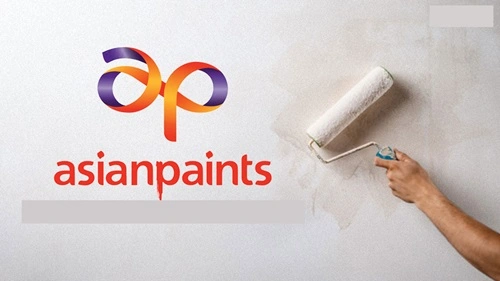Asian Paints, one of India’s largest and most successful companies, has a well-rounded business model that has enabled it to dominate the paint industry. Established in 1942, the company now holds a market share of over 50% in India and has expanded to more than 14 countries globally. Asian Paints has diversified its offerings beyond paints, entering the home improvement space with products like kitchen and bath fittings, waterproofing solutions, and interior design services. But what drives its profitability and market leadership?

Asian Paints Core Revenue Streams
The primary source of income for Asian Paints comes from its decorative paints segment, which includes products such as interior and exterior wall finishes, enamels, and wood finishes. These products are sold to both individual consumers (B2C) and businesses (B2B). The company has also ventured into industrial and automotive coatings through joint ventures, further expanding its revenue streams.
In addition to the sale of paint products, Asian Paints has built complementary services such as color consultancy and home painting services. This approach not only boosts paint sales but also adds value to the customer, creating a more integrated offering. The company also leverages a vast network of retailers, wholesalers, and distributors to ensure that its products reach every corner of the market, both in India and internationally.
Innovation and Technology
Asian Paints has a reputation for early adoption of technology, which has been critical to its success. One of the most significant investments was the purchase of a mainframe computer in the early 1980s, long before its competitors considered this step. This allowed the company to analyze market trends, forecast demand, and manage its supply chain efficiently.
Supply chain management is another pillar of its profitability. Asian Paints has perfected its supply chain to ensure that it is always a step ahead of its competitors. By optimizing operations and making timely investments in modern machinery, the company is able to reduce operational costs, improving its margins.
Marketing and Branding
One of the company’s standout features is its marketing strategy. From the introduction of Gattu, the mischievous mascot, in the 1950s, to its more recent advertising campaigns, Asian Paints has consistently captured the attention of its consumers, especially the Indian middle class. Its marketing isn’t just about selling paint; it’s about creating a connection with consumers through lifestyle-driven campaigns.
The brand also introduced tools like a paint budget calculator and a paint selector tool on its website, making it easier for consumers to make informed decisions about their painting needs. Such customer-centric innovations have not only driven sales but also strengthened brand loyalty.
Diversification and Global Expansion
Asian Paints hasn’t limited itself to just paints. It has diversified into adjacent industries such as home improvement and decor, offering products like kitchen and bathroom fittings under sub-brands like Sleek and Ess Ess. This has expanded the company’s revenue base and helped it establish a presence in the growing home improvement market.
The company’s global expansion is another factor that contributes to its profitability. With operations in over 14 countries and 26 manufacturing plants, Asian Paints has positioned itself as a significant player in the international paint market. Subsidiaries like Berger International, SCIB Paints, and Taubmans help bolster its international presence and revenue.
Financial Strength
Financially, Asian Paints is in a solid position. In FY2023, the company’s revenue reached ₹34,875 crores (about $4.4 billion). It maintains healthy profitability ratios, with an EBIT margin of 15.66% and a net margin of 12.03%. The company also boasts a strong return on capital employed (ROCE) of 36.98%, indicating efficient use of its capital.
Challenges and Opportunities
While Asian Paints is a dominant player, it is not without challenges. Its international operations have not always been as successful as its domestic ones, with some markets underperforming. The paint industry is also heavily dependent on economic cycles, making it vulnerable to recessions and fluctuations in consumer spending.
However, the company is well-positioned to take advantage of growth opportunities, especially in the industrial and automotive paint sectors, which require high-end technology that Asian Paints can afford to invest in. Additionally, the company’s strong brand positioning and focus on emerging markets give it a competitive edge.
Conclusion
Asian Paints’ success is rooted in its customer-centric approach, technological innovations, and strategic diversification. By continually improving its supply chain, marketing strategies, and operational efficiency, the company has been able to maintain its market leadership while also expanding into new sectors and geographies. With a focus on both innovation and customer experience, Asian Paints is well-positioned to continue its growth trajectory and remain a dominant force in the global paint industry